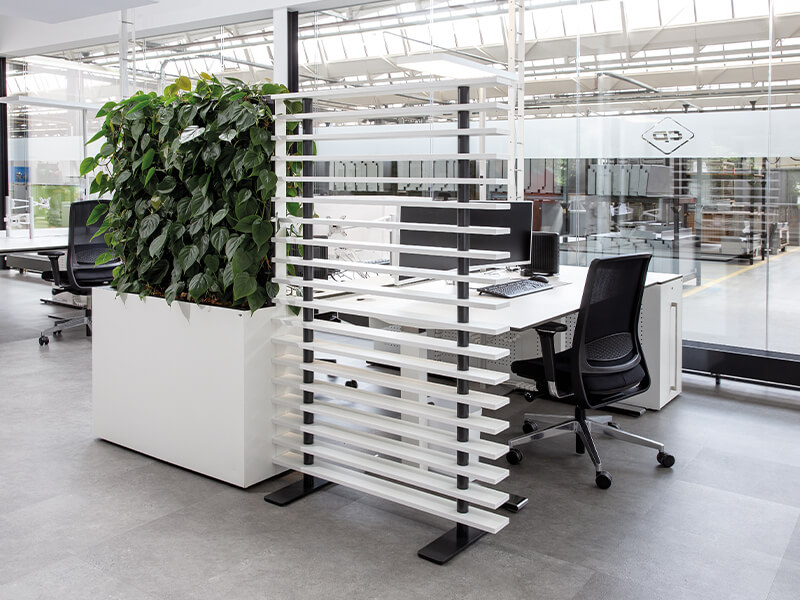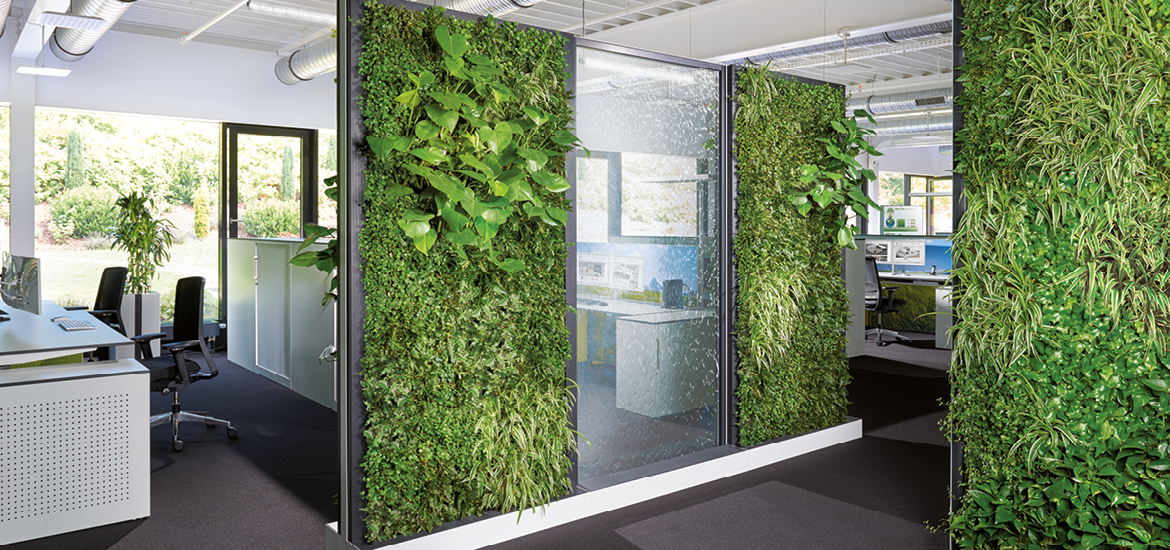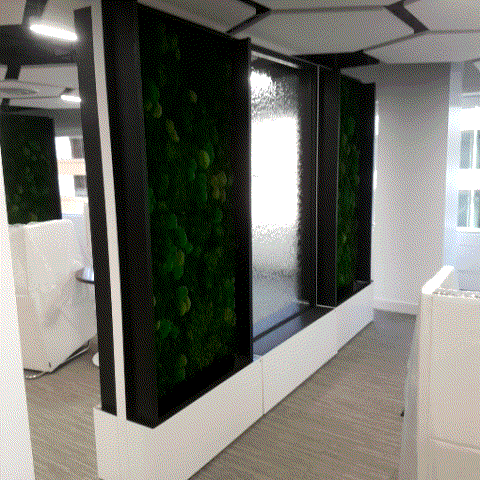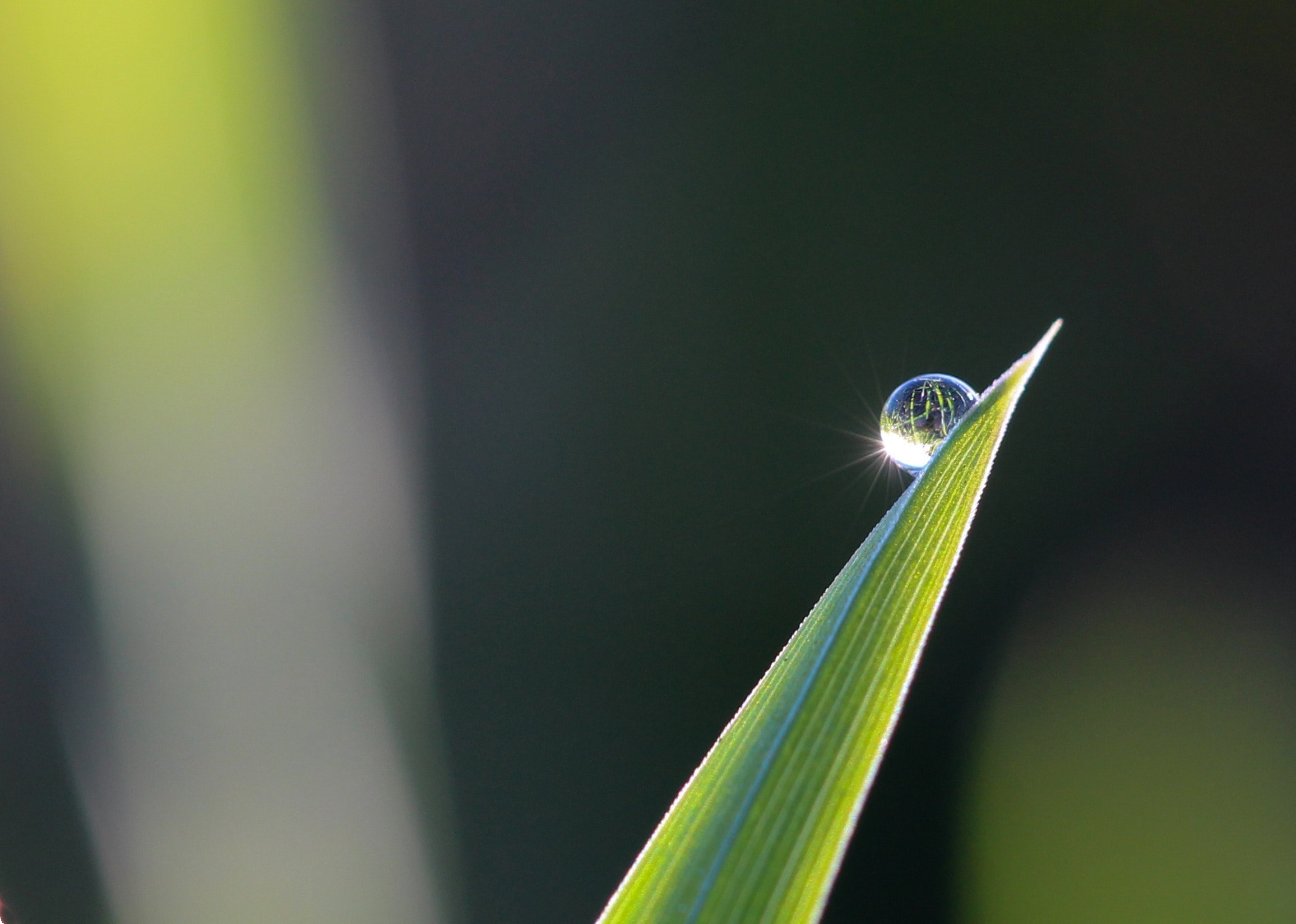
Biophilic Design – connecting people with nature
An experience of nature indoors through biophilic design approaches
Humans feel most comfortable in natural settings, since health is promoted, stress is reduced, and well being is enhanced there. However nowadays we do not spend most of the day outdoors but live and work in urban settings. Biophilic design principles can be applied to produce the positive effects of natural elements also in made-made surroundings: natural analogies and natural principles can be used to create functional and beautiful buildings which have a positive impact on people through the connection with nature.
Biophilic design approaches can be implemented in different ways and also combined with one another. Here are some examples:
- A building flooded with light with a natural interior design
- Furniture, walls, or floors made of natural materials
- Green and water elements which provide for pleasant indoor climate and feeling of comfort
- Decorations made of stone or wood in natural shapes
- A building that looks out onto a green landscape
Studies prove that a direct experience of nature in rooms has a health-promoting and stress-reducing impact on people and increases cognition as well as creativity.1 2
The human desire to live in harmony with nature
The incorporation of natural elements in a building or rooms is not a completely new phenomenon. Many different cultures have been integrating natural elements in their own homes or public spaces for a long time. Examples of this can be found all over the world, such as the gardens with water canals and fountains in the Alhambra in Spain, bonsai trees in Japanese homes, the Hanging Gardens of Babylon, or vines on German timbered houses.
Biophilia – love of life or living systems
The term “biophilic design” developed gradually. In 1964, the social psychologist Erich Fromm investigated the topic of biophilia and defined it as “love of life or living systems”. Almost twenty years later, the biologist Edward Wilson developed and expanded the concept further. Wilson hypothesized that we humans have an instinctive urge to live in harmony with nature. Kellert and colleagues took up the biophilia hypothesis and coined the term biophilic design: connecting people in their man-made surroundings with nature.4
Creating comfortable workplaces with biophilic design
Biophilic design in the work environment creates a lively working atmosphere in which new ideas can grow and which increases employee well being. Plants are living organisms and are perceived as being very pleasant by people. In sufficient numbers, certain plant species help to improve air quality, since they have the special ability to filter pollutants out of indoor air. Vertical, extensive wall greening is very effective in this case, since it not only enhances comfort in the workplace but also increases employee productivity and concentration and promotes health.5










